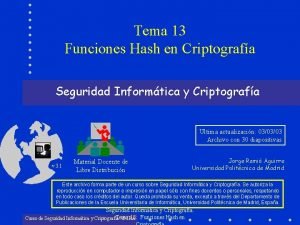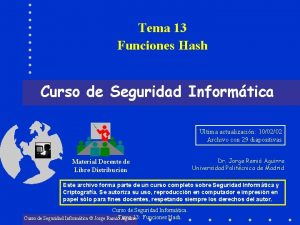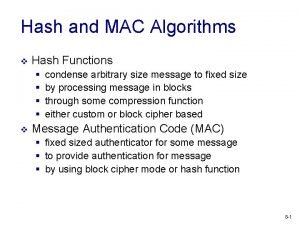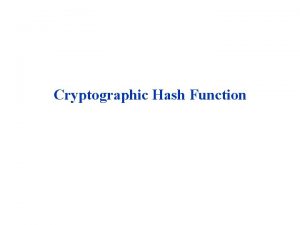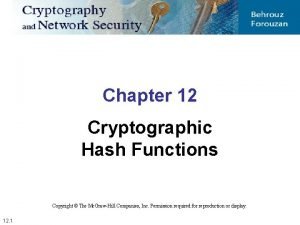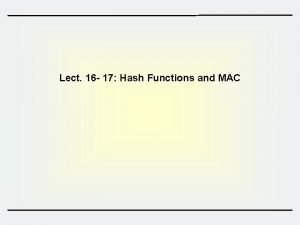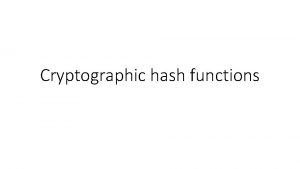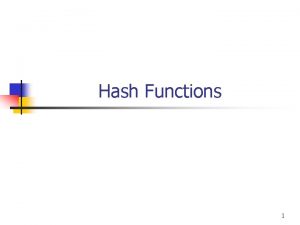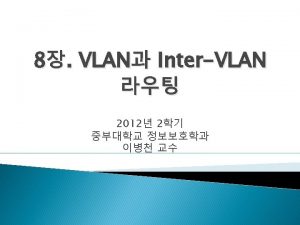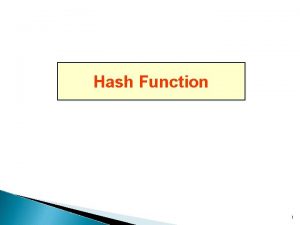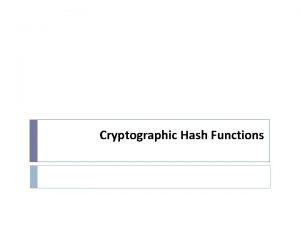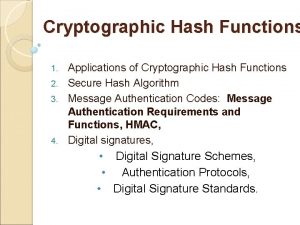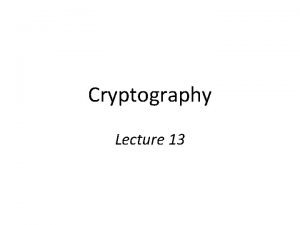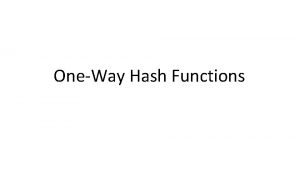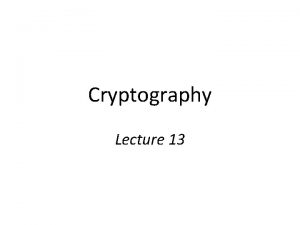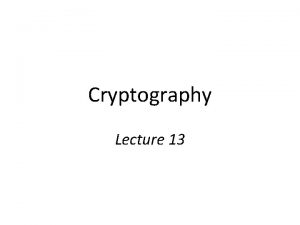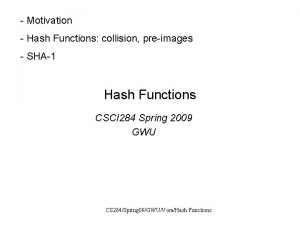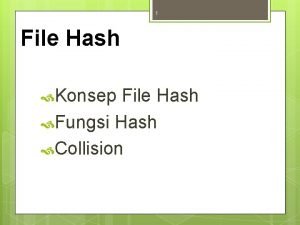Hash and MAC Algorithms v Hash Functions v















- Slides: 15

Hash and MAC Algorithms v Hash Functions § § v condense arbitrary size message to fixed size by processing message in blocks through some compression function either custom or block cipher based Message Authentication Code (MAC) § fixed sized authenticator for some message § to provide authentication for message § by using block cipher mode or hash function 8 -1

Hash Algorithm Structure 8 -2

Secure Hash Algorithm v v v SHA originally designed by NIST & NSA in 1993 was revised in 1995 as SHA-1 US standard for use with DSA signature scheme § standard is FIPS 180 -1 1995, also Internet RFC 3174 § nb. the algorithm is SHA, the standard is SHS v v v based on design of MD 4 with key differences produces 160 -bit hash values recent 2005 results on security of SHA-1 have 8 -3

Revised Secure Hash Standard v v NIST issued revision FIPS 180 -2 in 2002 adds 3 additional versions of SHA § SHA-256, SHA-384, SHA-512 v v designed for compatibility with increased security provided by the AES cipher structure & detail is similar to SHA-1 hence analysis should be similar but security levels are rather higher 8 -4

SHA-512 Overview 8 -5

SHA-512 Compression Function v v v heart of the algorithm processing message in 1024 -bit blocks consists of 80 rounds § updating a 512 -bit buffer § using a 64 -bit value Wt derived from the current message block § and a round constant based on cube root of first 80 prime numbers 8 -6

SHA-512 Round Function 8 -7

SHA-512 Round Function 8 -8

Keyed Hash Functions as MACs v want a MAC based on a hash function § because hash functions are generally faster § code for crypto hash functions widely available v v hash includes a key along with message original proposal: Keyed. Hash = Hash(Key|Message) § some weaknesses were found with this v eventually led to development of HMAC 8 -9

HMAC v v specified as Internet standard RFC 2104 uses hash function on the message: HMACK = Hash[(K+ XOR opad) || Hash[(K+ XOR ipad)||M)]] v v where K+ is the key padded out to size and opad, ipad are specified padding constants overhead is just 3 more hash calculations than the message needs alone any hash function can be used § eg. MD 5, SHA-1, RIPEMD-160, Whirlpool 8 -10

HMAC Overview 8 -11

HMAC Security v v proved security of HMAC relates to that of the underlying hash algorithm attacking HMAC requires either: § brute force attack on key used § birthday attack (but since keyed would need to observe a very large number of messages) v choose hash function used based on speed verses security constraints 8 -12

CMAC v v v previously saw the DAA (CBC-MAC) widely used in govt & industry but has message size limitation can overcome using 2 keys & padding thus forming the Cipher-based Message Authentication Code (CMAC) adopted by NIST SP 800 -38 B 8 -13

CMAC Overview 8 -14

Summary v have considered: § some current hash algorithms • SHA-512 § HMAC authentication using hash function § CMAC authentication using a block cipher 8 -15
 Tema de hash hash
Tema de hash hash Algoritmo abcde
Algoritmo abcde Mac address hash
Mac address hash Who was the real macbeth
Who was the real macbeth Mac mac o kok dac
Mac mac o kok dac Two simple hash functions
Two simple hash functions Whirlpool in cryptography
Whirlpool in cryptography Hash functions
Hash functions 67452301
67452301 Hash functions
Hash functions Evaluating functions and operations on functions
Evaluating functions and operations on functions Evaluating functions and operations on functions
Evaluating functions and operations on functions Computational thinking algorithms and programming
Computational thinking algorithms and programming Design and analysis of algorithms syllabus
Design and analysis of algorithms syllabus Data structures and algorithms iit bombay
Data structures and algorithms iit bombay Association analysis: basic concepts and algorithms
Association analysis: basic concepts and algorithms
